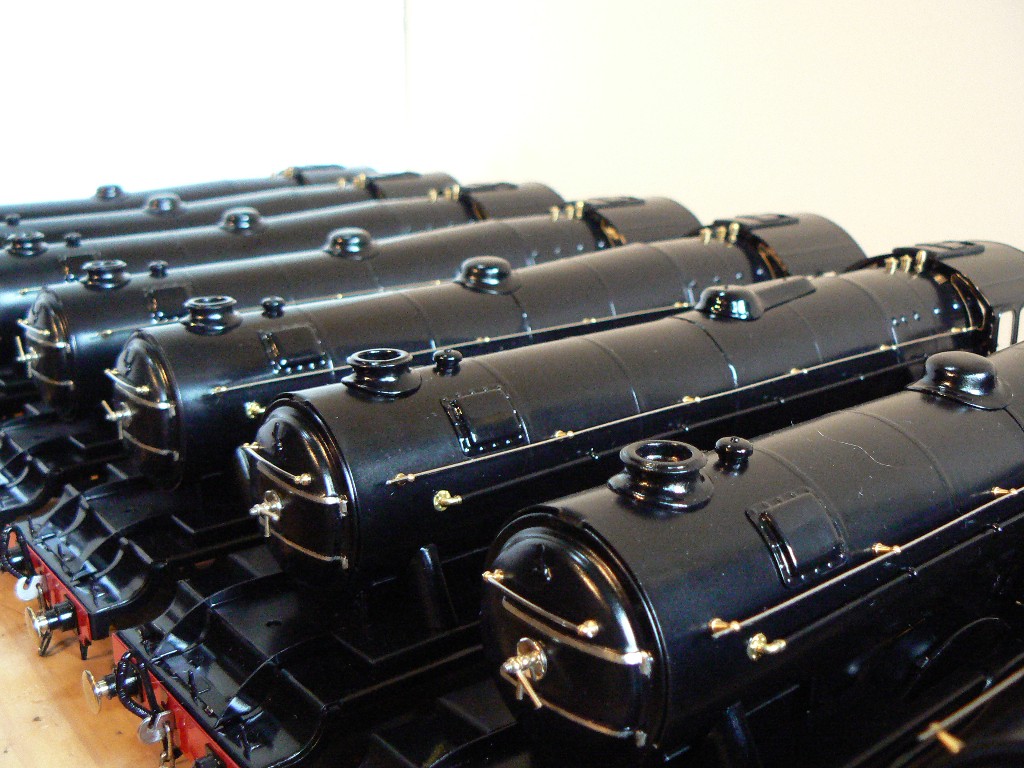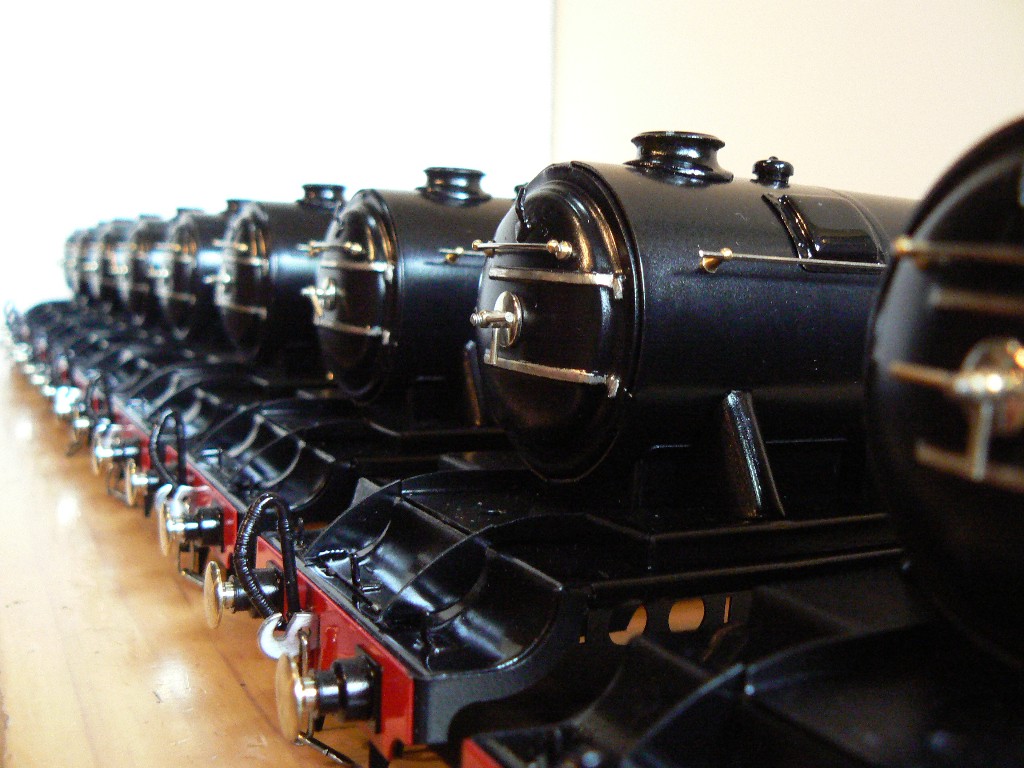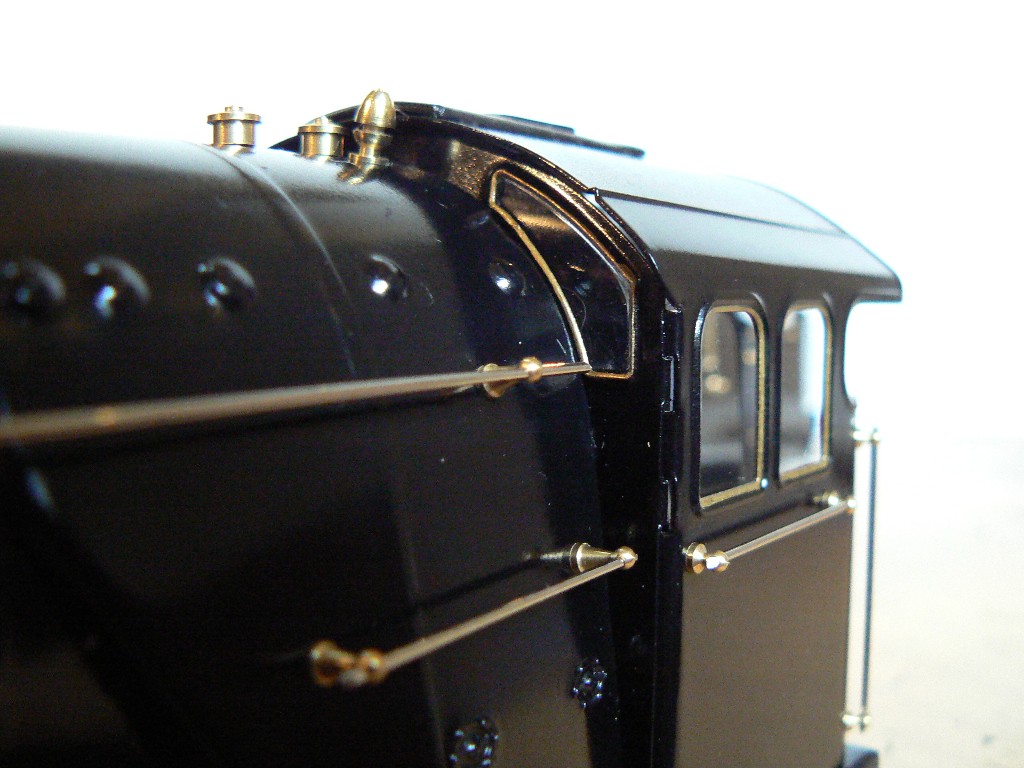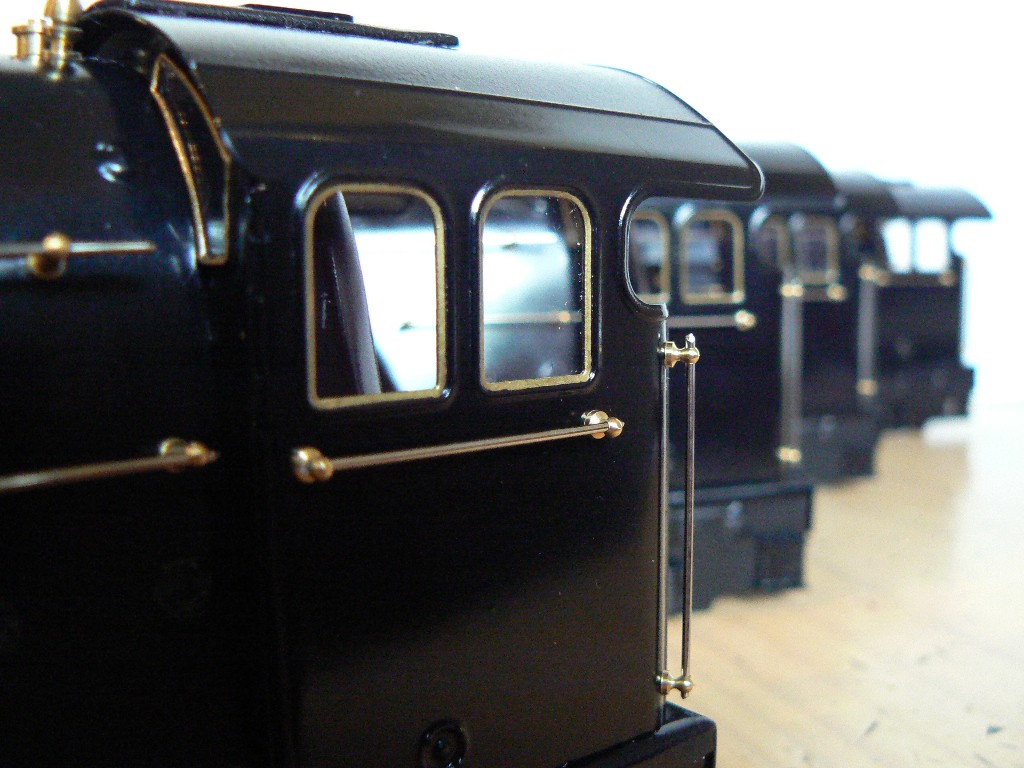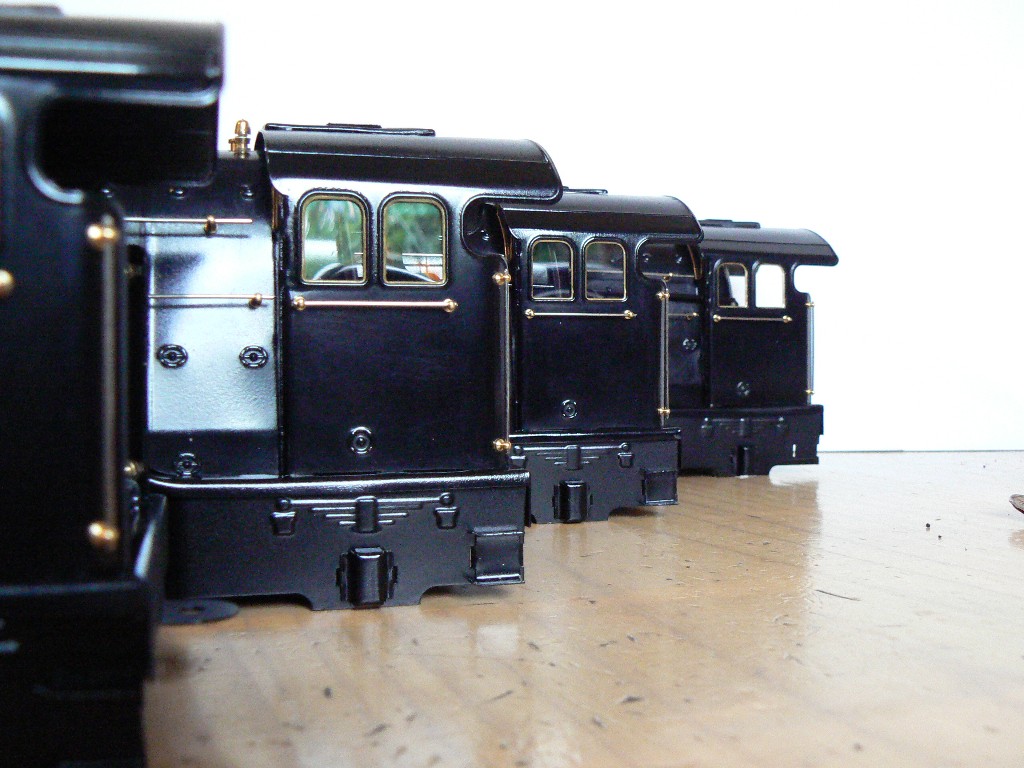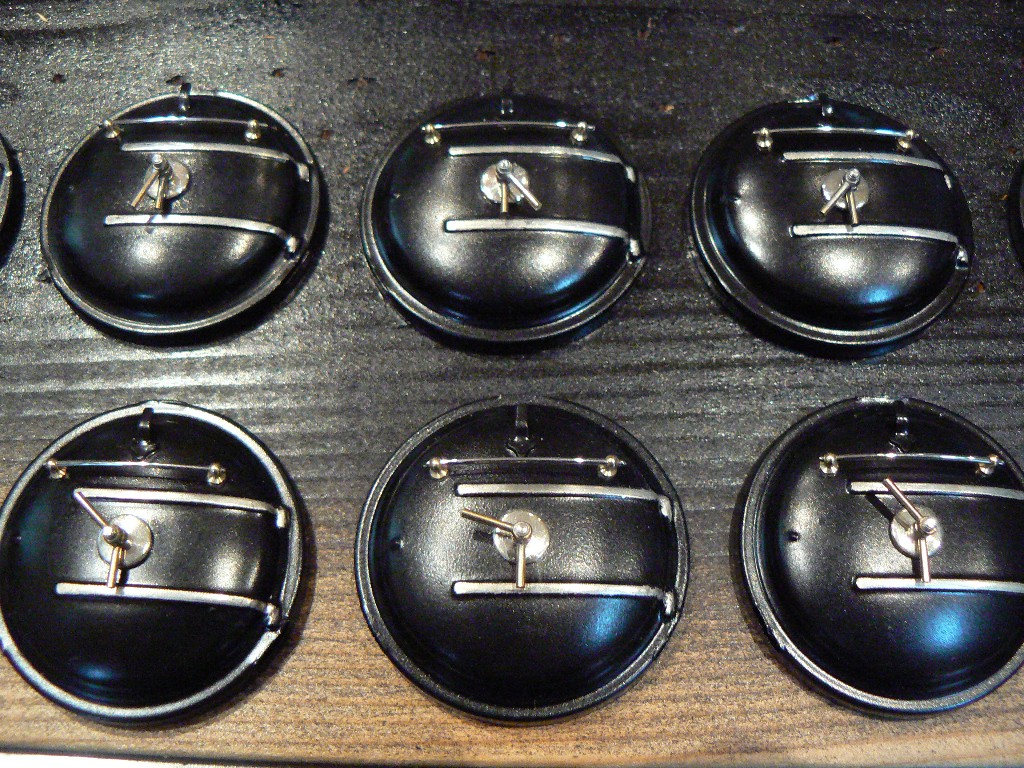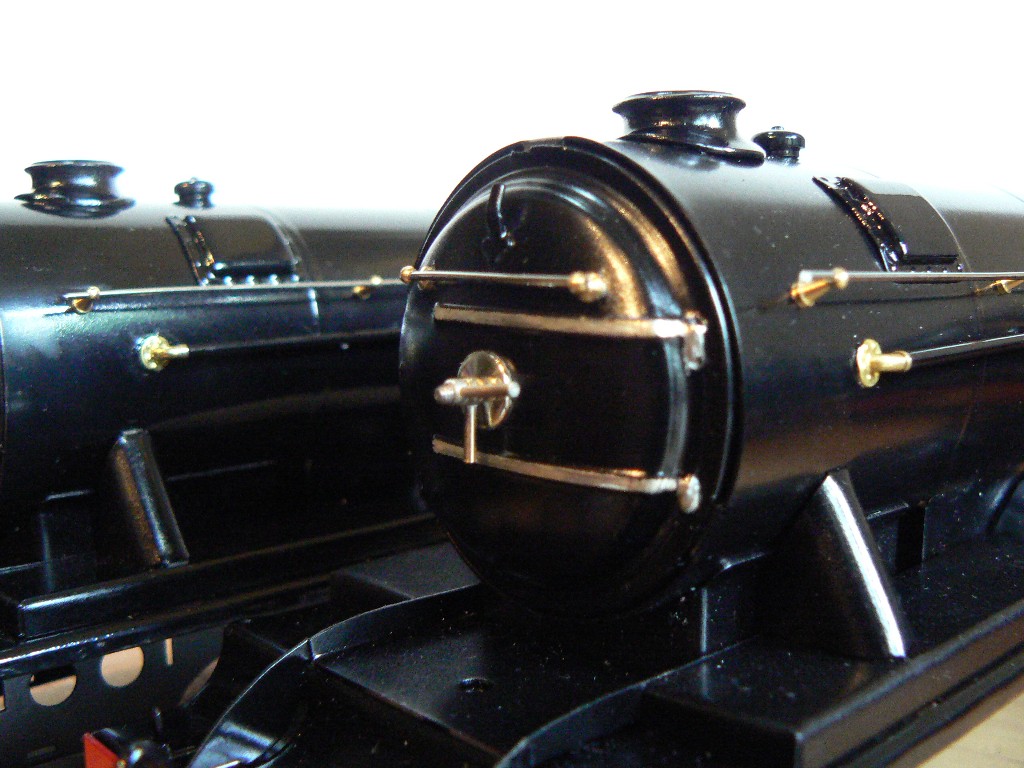Here are a few shots of the current tinplate Gresley A1 and A3 O gauge production batch. These are the wartime black loco housings, as you can see they are still not finished! (as of November 2017). Currently I am building the mechanisms in between being pulled in several different directions in real life. The locos are a mix of LHD and RHD, early type banjo and old round dome, and with and without external superheater headers. They’ll all go out with non-corridor tenders.
I must say the satin black engines have really grown on me. The raised boiler bands just make them, I think. Having seen how these came out I think a Gresley P1 Mikado in black (with possibly a smidgeon of red lining) would look very nice. Hmmmm, a possible project for the future.
Following close behind are the fully lined gloss green locos in late pre-war guise with late cabs and corridor tenders, as they were in the mid 1930’s at the peak of their development just before the A4s came on the scene stealing their glory (and their tenders!). Much as I enjoy the details on these locos all the blackness is a bit of a downer, unless you happen to be a Goth tinplate collector. Probably not too many of them around! So I am looking forward to some green engines cheering the place up a bit.
As an experiment I built this batch by painting them all before I assembled them, as opposed to doing the bulk of the painting (apart from priming internal and faying surfaces against rust) afterwards which is how I did the P2s and prototype Scotsman. I was very pleased with the result and I’m doing it again this way with the green engines. The lining and lettering I’ll do once they are partly assembled. It was an interesting exercise and a bit of an insight into olden days techniques- this is after all how Bassett-Lowke built their litho printed Flying Scotsman and Royal Scot and if I ever venture into litho printing it was definitely a useful experience.
Another experiment was flush cab glazing. I’m quite pleased with this-from now on all my production locos will be glazed.
I also picked out the pressed in window beading detail with gold paint, which I think is definitely worth it.
Here’s a picture of a batch of smokebox doors built up ready to go into the green engines.
One of the things I have enjoyed playing with is using real metal for all of the metallic finishes. No Humbrol silver paint anywhere! The smokebox door hinges and strapping, for example, are the bare tinplate, polished and clear lacquered. The darts are nickel plated brass, and the circular boss is polished nickel silver. For odd bits and bobs of plating where it’s not worth going to a plating shop I have my own electroplating setup for dip or brush plating. Going back to the cab windows, if I was really enthused I could maybe try brass plating them next time….
And this is how they will look once installed. watch this space for some slightly less funereal pictures in the next few weeks…
